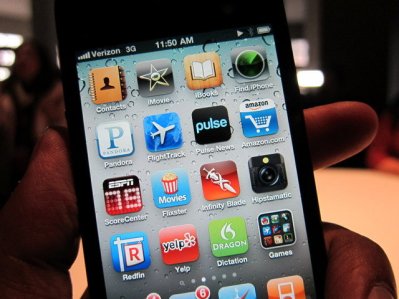
The study, if accurate, proves that there was indeed considerable pent-up demand for an iPhone on Verizon’s network. The carrier only sells the iPhone 4 on its network, and it announced in April that it had sold 2.2 million iPhones in its first quarter.
[aditude-amp id="flyingcarpet" targeting='{"env":"staging","page_type":"article","post_id":307311,"post_type":"story","post_chan":"none","tags":null,"ai":false,"category":"none","all_categories":"business,mobile,","session":"A"}']AT&T, which sold 3.6 million iPhones in its first quarter, also offers cheaper models like the bargain-priced $50 iPhone 3GS. AT&T hasn’t offered up any recent details on the amount of iPhone 4s on its network.
Verizon’s iPhone 4 market share jumped from 20 percent during the device’s launch week in February to 26 percent in May, according to Localytics’ study (see chart below). As of July, the carrier housed a third of all iPhone 4s in the country.
AI Weekly
The must-read newsletter for AI and Big Data industry written by Khari Johnson, Kyle Wiggers, and Seth Colaner.
Included with VentureBeat Insider and VentureBeat VIP memberships.
Judging from the study, there seems to have been a big jump in Verizon iPhone 4 sales between May and June. Localytics believes many consumers jumped to Verizon to take advantage of its unlimited data plan, which the company is scheduled to stop supporting today for new customers. AT&T dumped its unlimited data plan last year, although it’s still offering unlimited service to previous iPhone users.
Here’s how Localytics explains its research methodology: “Each month’s market share number is based on the seven-day period leading up to the 1st of the month – therefore, numbers should be taken as market share on the first day of the stated month. Data is based on app usage as seen by Localytics.”
VentureBeat's mission is to be a digital town square for technical decision-makers to gain knowledge about transformative enterprise technology and transact. Learn More